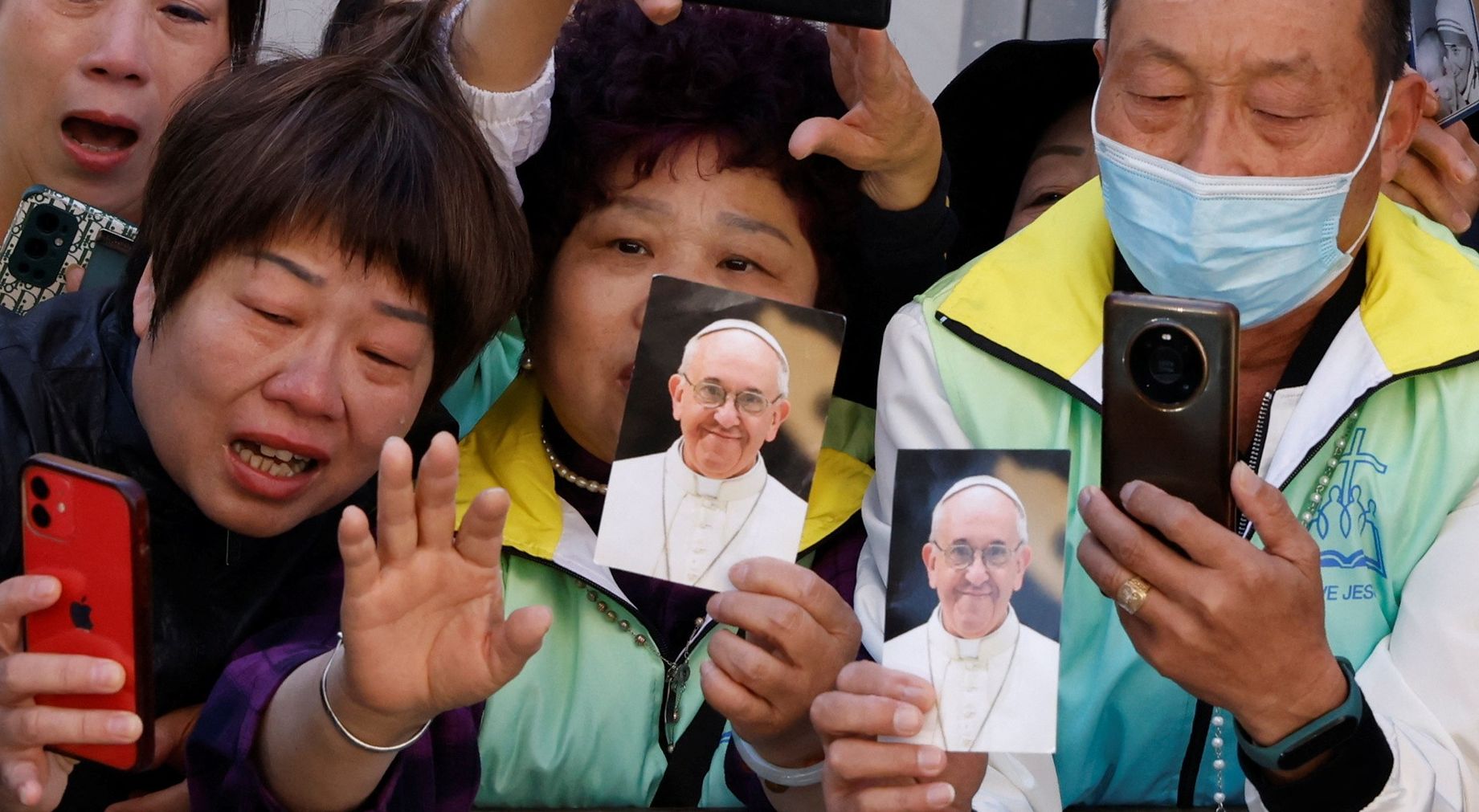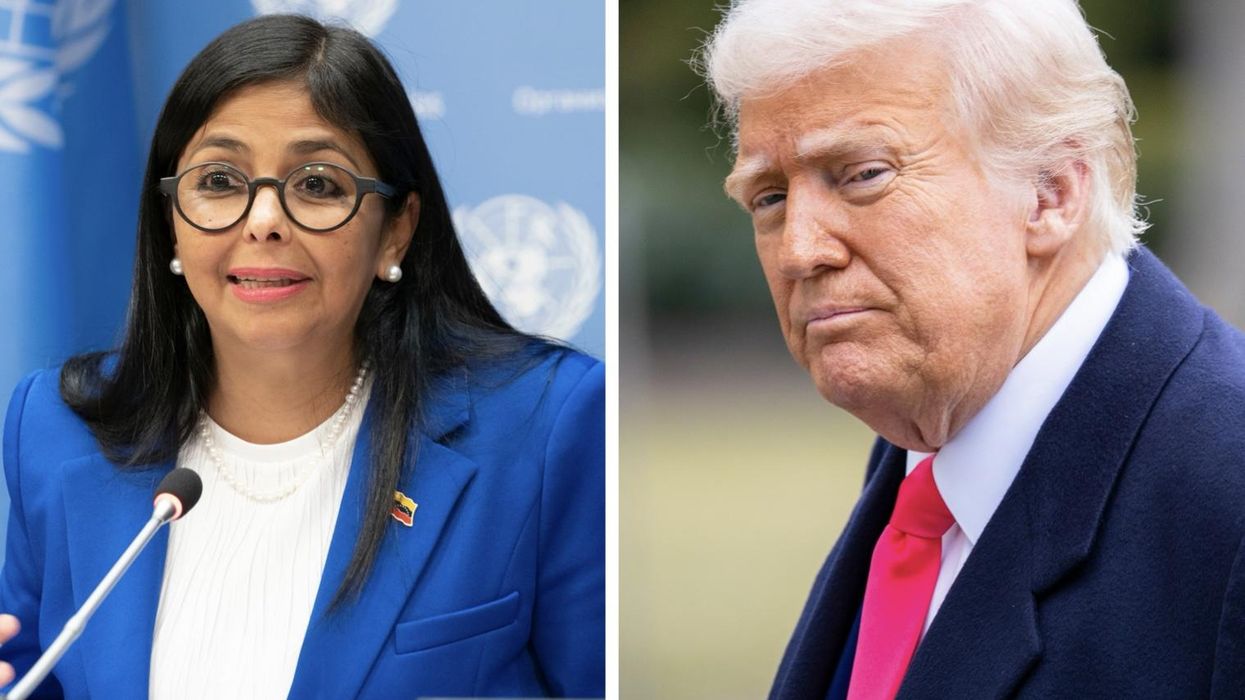The United States has cast a values veil over its multifaceted match of punishments and restrictions with China. When he dismisses Chinese leader Xi Jinping as a “dictator,” the Cold War veteran is making a pointed value judgement that puts a moral spin on the relationship.
According to many in Washington, there is a new “axis of evil” out there, and China is the fallen angel, supported by Russia, North Korea, and Iran.
If global diplomacy was a morality play, there would surely be no actor more devoted to principles and the fight for good over evil than the Vatican, arguably the consummate values-driven state, despite its own cardinal sins in the human resources department. Of course, in the past, the Roman Catholic church has strayed from the straight and narrow and made soul-wrenching deals with the devil — consider Nazi Germany, fascist Italy, the juntas in Chile and Argentina, and the communist regimes of Eastern Europe.
With China, the Holy See is not trying to drive the Communist “Satan” away or turn it into a paragon of religious freedom. The main mission has been to find ways to build trust and gain confidence. Religious affairs and China specialists have drawn parallels between the Vatican and the Chinese Communist Party in the way they are organized, function and exercise authority, leading some to consider the similarities a source of affinity if not mutual understanding.
For example, the city-state’s diplomatic efforts have remained consistent and persistent from one papal administration to the next, starting arguably with the progressive world-traveling Paul VI back in the 1970s and through the conservative reigns of John Paul II and Benedict XVI, to the liberal non-judgmental crowd-sourcing faith of Francis.
Today, there may be no need to pray to Saint Jude for a papal visit to China. It could happen, although the incumbent shepherd, who requires a wheelchair to meet his flock, would seem physically unable to take on such a pilgrimage — there are some 20 cathedrals and basilicas in the mainland. In September, however, he came close, spending five days in neighboring Mongolia, which has only about 2,000 Catholics, compared to about 12 million in China. If, as many papal succession oddsmakers who try to divine the mysterious ways of the Holy Spirit believe, the next pope is from Asia, then hopes for a China trip will surge. And the momentum of goodwill and history could bring the bishop of the Eternal City to the Forbidden City.
The Holy See’s diplomatic agenda with China is less complicated than Washington’s. The Vatican has simple objectives — to unify the Roman church so there is coherence in its management and in catechism and theology, and to protect Catholics everywhere so that they are free to worship in churches and practice their faith openly. The missionary work here is not as much of a priority, though in other parts of the world, the Church is battling to keep souls on pews and recruit priests.
In 2018, the Vatican signed an agreement with Beijing on a process for appointing bishops in the patriotic Chinese church — the open part of the church that pays allegiance to the state. In the order of the mass in the patriotic church, the pope does get mentioned, along with the bishop of the diocese, while the state does not, exactly as is the practice in churches around the world. Catholics in China who are loyal to the pope have worshipped underground in secret, or at least discreet, locations. The Vatican-Beijing agreement on bishops, with the pope having the last word on Chinese-approved candidates, essentially recognizes the spiritual authority of the Holy Father, with the state nominally a regulator or monitor of religious affairs.
The hopeful prayer is that if the selection process works smoothly, this would make it possible for underground Chinese Catholics to surface and eventually allow the Vatican to establish formal relations with Beijing. For now, the Holy See has diplomatic relations with and representation in Taiwan as the Republic of China, with a nunciature or embassy in Taipei. There has been no nuncio appointed since 1971; a chargé d'affaires is the highest-ranking resident official.
Meanwhile, the Holy See maintains a “study mission” in Hong Kong — a de facto consulate — that is manned by a Vatican diplomat, typically a monsignor, or clergyman of stature.
These diplomatic missions are by no means the only means of engagement. Two Chinese bishops, both of whom Pope Francis nominated from a list put forward by Beijing, participated in the October synod convened by the pope to discuss church issues and policy. After the Holy See complained that China had appointed a bishop earlier this year who had not received the papal imprimatur, no Chinese prelates were on the initial list of synod participants. But on the eve of the gathering, the two were included on the final roster. While they turned up, they left midway through the three-week conference.
Francis has also reached out to Beijing in other ways. Hong Kong archbishop Stephen Chow, whom the pope recently made a cardinal, visited Beijing in the spring before receiving his red biretta. In November, the head of the Chinese Catholic church, Bishop Joseph Li Shan paid a return visit to Chow’s archdiocese. When his plane entered Chinese airspace en route to Mongolia, Francis issued a message of greetings. “I ask Chinese Catholics to be good Christians and good citizens,” he said days later to the congregation at a stadium mass in Ulaanbaatar, which Catholics from China and around the region attended.
That same month, the Vatican sent its envoy on the Ukraine conflict to China. Cardinal Matteo Zuppi, who had been to Kyiv, Moscow and Washington prior to Beijing, was received by the special envoy for Eurasian affairs, the first-ever meeting in the Chinese capital between the Holy See and a senior Chinese official.
This effort was reminiscent of the Holy See’s behind-the-scenes efforts to reconcile the U.S. and Cuba. Contrary to its crusading past, the Vatican has been brokering peace among nations since even before the establishment of the city-state in 1929. It was involved in the negotiations to end both world wars and sought to mediate between the U.S. and the Soviet Union during the 1962 Cuban Missile Crisis.
China and the Vatican have engaged in high-level talks before. In 2020, at the Munich Security Conference, Archbishop Paul Gallagher, the Vatican secretary for relations with states, considered to be the Holy See’s foreign minister, met Chinese foreign minister Wang Yi. The two discussed the agreement on bishops, which has been renewed twice despite disputes over certain appointments, increasing restrictions on religious freedom, and reports of the destruction of churches in parts of China.
The pope, who, as his predecessors did, faces criticism, including from his own cardinals for engaging Beijing, acknowledged in a Reuters interview last year that the deal was “slow going,” but stressed that the Church had to take a long view and that imperfect dialogue was better than nothing.
The diplomacy lesson offered by the world’s chief values-card player is that pragmatism, patience and consistency are the best tools for doing the godly work of peace and security building. With China, there will be setbacks to endure and sacrifices to make. A workable deal requires painstaking negotiation and may not be ironclad. But with faith and perseverance, an understanding can be reached — and eventually a miracle might happen.
















